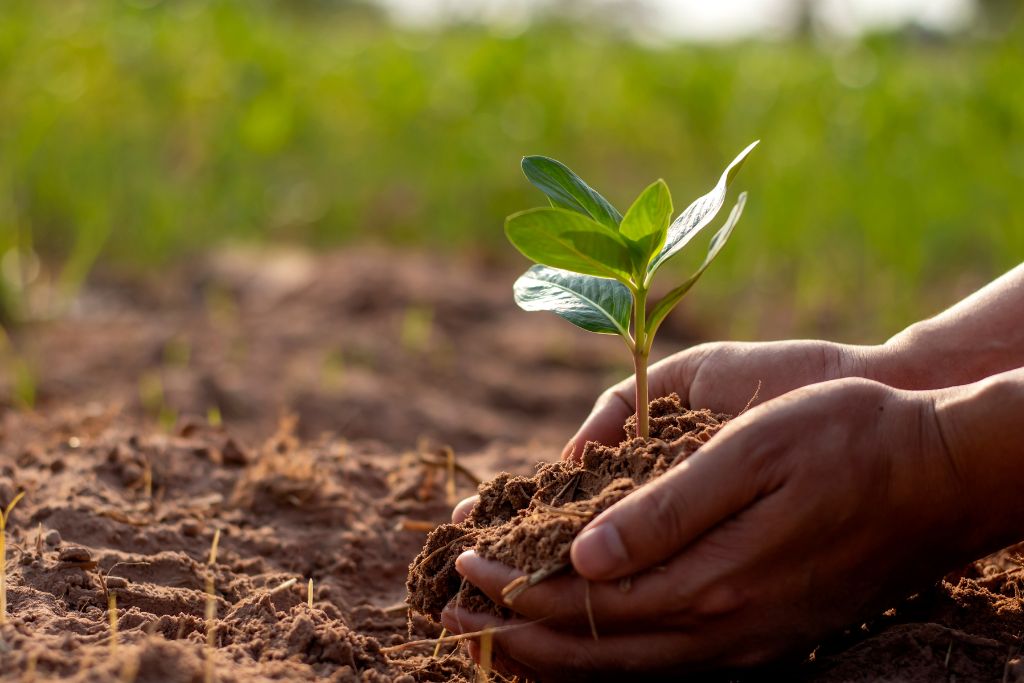Blog, Home Gardening Tips
Planting Trees In Clay-Heavy Soil
Anyone interested in growing strong, healthy trees should take the time to learn about the soil in which those trees are or will be growing.
That may sound basic, but it’s often overlooked by homeowners. And in the St. Louis area, clay is a significant ingredient in soil.
If you’re considering planting trees or shrubs, and the soil on your property is heavy in clay content, then you should take time to consider exactly which species to plant. Just as important, if you already have mature trees and bushes growing on your property, it’s important to do all you can to help them thrive in this less-than-perfect soil.
Which Species Grow Best In Soil With High Clay Content
It’s important to understand that soil heavy in clay isn’t without some attributes. The main benefit being that soil with a great deal of clay holds water better than less dense, loam-like soil. This means trees, shrubs, and plants that need a good amount of water tend to like clay.
Of course, this also means species that don’t do well in water-saturated ground don’t do well in clay. Experts vary widely about which trees do best in clay soils. Check with your nursery about the soil requirements for trees you are considering. Most trees that are native to Missouri will tolerate a wide range of soil types. Soil preparation and after care can be more critical than which native tree to plant.
Soil Preparation Is The Key To Success
In addition to clay content, it’s important to evaluate where trees will be planted. As moisture is the chief consideration when planting in clay-heavy soil, drainage is an important variable. Areas on slight or moderate slopes will in most cases drain well, meaning moisture will not accumulate to the degree that it would on absolutely flat, level ground. Also, the type or types of grass growing in the area can affect how well an area drains. Also, “thirsty” grass species with deep, dense root systems will soak up more water than other species.
When the time comes to plant your new tree or trees, preparation is crucial. While this can be a significant amount of work, it will likely benefit your new trees greatly in the near- and long-term.
Assess the size of the tree’s root ball and dig a planting pit at least twice the diameter of the root ball. The depth of the pit should be roughly twice the height of the root ball.
This doesn’t mean you’re going to put the root ball onto the bottom of the planting pit. Planting depth varies from species to species; some prefer the upper portion of their root system to be partially exposed, while others need to be planted with roots entirely covered.
It’s also important to break up the soil in the bottom and lower portions of the sides of the planting pit. This increases drainage and loosens the soil, enabling the new tree’s root system to better penetrate the dense soil.
The bottom of the pit may be improved by adding some grit, which also supports drainage. Depending on the tree’s species, the pit should then be lined with compost, mulch, soil, or a mixture of these planting media.
Once the tree is in place at the proper depth in the pit, then fill in the put with the planting mixture.
Consulting with a certified arborist is a good idea, as each species has different specific needs, which may vary by planting site.
The First Months After Planting Are Crucial
After planting trees, the instinct of many homeowners is to water their new tree or trees daily. While this may be necessary for many species in many environments, homeowners who have chosen a species that thrives in clay soil have chosen trees that do not respond well to being waterlogged.
Again, working closely with a certified arborist can help homeowners understand precisely what their new tree needs in terms of moisture and support in its critical first weeks and month in its new “home.”
Contact The Experts At Hansen’s Tree Service For Help
Our staff and certified arborists have a wealth of knowledge and experience in evaluating which trees will grow best in every type of soil. They will evaluate the specific characteristics of your property and your soil, and help you determine which species will work best for you. Contact us today, schedule a tree consultation and start planning today!
